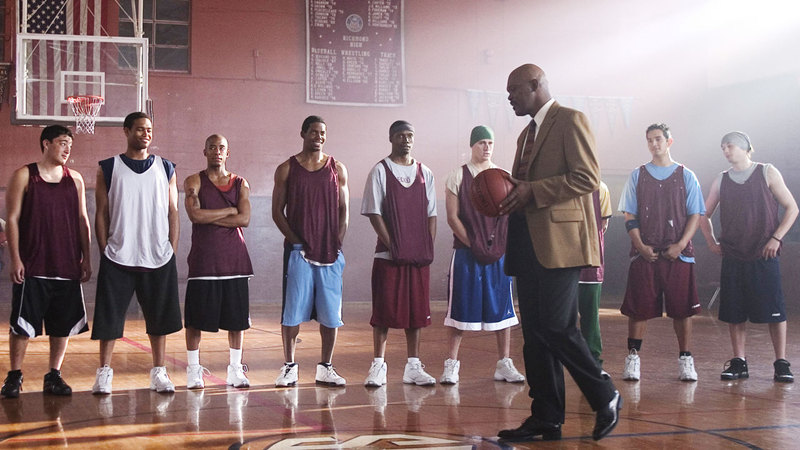By its nature, film is a visually dynamic medium, carrying power to entertain us, be it a drama, documentary, or an action film. There are different components at work; the mix of visual images with sounds, along with actors, makes film one of the complex art mediums to work with. The real challenge lies in creating a series of shots, although metaphorically speaking, in which several components coalesce seamlessly for a meaningful experience: The acting has to be good, the script arouse right emotions, and the setup conjure memorable images. Directors often employ several components, and, therefore, there is no magic formula that works for a particular theme. Surely, this opens room for more experimentation, giving filmmakers additional freedom to push the boundaries of film as an art medium.
Terrence Malick and Lars von Trier are two directors that can safety be pegged with the label of “experimental” filmmaker. Malick with his recent effort, “The Tree of Life” (2011), and Trier’s last two movies, “Antichrist” (2009) and “Melancholia” (2011), have pushed the envelope of film as a visual medium to a different dimension. It’s fair to say that these filmmakers bank on creating a deep visual impact, with emphasis on photography and placement of characters against the backdrop of natural beauty. Style-wise, both the filmmakers have tried something new by mixing static images with moving pictures, thereby mimicking a documentary and making their films appear more like pseudo-documentary. Even though thematically both “The Tree of Life” and “Melancholia” feature beautiful solar snapshots of Earth, they do differ greatly in their reason for presenting visually striking images of Earth: “The Tree of Life” deals with the evolution of Earth, while “Melancholia” shows the end of life on Earth. Coincidentally, both “The Tree of Life” and “Melancholia” premiered in 2011 at Cannes.
Since Trier, in the past, has talked about depression and dark human behavior, it’s hardly surprising that with “Melancholia” he returns to the roots of his favorite theme: depression. The world melancholy deals with a depressed emotional state of mind, and Trier’s “Melancholy” thankfully is not gruesome or overly gloomy as was his previous gothic effort, “Antichrist.” “Melancholy” might be another entry in the “end-of-the-world” genre, but at the heart, the film highlights the relationship between two sisters, Justine (Kristen Dunst) and Claire (Charlotte Gainsbourg). The film begins with a beautifully staged overture segment, in which for almost nine minutes, everything is shown in extreme slow motion. The romantic music, the deep-colored sets, and the visually impressive setup of this sequence feel like a sophisticated theater setting. As the sequence plays out, we learn a catastrophic event is striking the Earth, and a white light will evaporate every life form on Earth. Of course, in the beginning, we also gather what the end of the film will look like. Trier sets the mood early on, and despite the disaster, the soft and tender music reduces the emotional impact in the aftermath of the disaster. Certainly, by the time the movie ends, we realize this was not a regular “disaster” movie, after all, but it is, in fact, a case study of interrelationships.
Just like “Antichrist,” Trier presents the story in a two-chapter format, each chapter dedicated to one sister. The first chapter, “Justine,” focuses on Justine’s marriage to Michael (Alexander Skarasgard). The marriage reception is flamboyant and expensive, and we know everyone at the party comes from the upper class. Family tensions flare up with Claire’s husband, John (Keifer Sutherland), almost throwing out the belongings of his mother-in-law. Meanwhile, Justine is mesmerized by a bright, shinning red star in the sky. As the marriage party progresses, Justine becomes increasingly unstable, and through several sequences with Claire and John, we learn that Justine is emotionally depressed. At this point, Michael walks away from the party, and the celebrations are called off. In the second chapter “Claire,” Justine’s state is getting worse, and she comes to stay with John and Claire. Justine is finding it hard to keep going on a daily basis, as she needs Claire’s help in everything. However, Justine’s condition improves over time, with Claire getting nervous after she learns that a planet named Melancholia is in the Earth’s orbital path and may strike Earth. John later tells Claire that it’s a flyby and thinks there is no way Melancholia could strike Earth. Claire plans for the worst when her fears are confirmed by a Web site.
The chapter format introduces the identities of the two female leads that differ greatly in response to the impending disaster and ultimately their death. Trier throws things a little bit off-balance by showing us Justine’s depression and introducing Melancholia at the same time. One wonders if it is purely coincidental and if the arrival of Melancholia has triggered some sort of an astrological imbalance in Justine’s zodiac sign. How could a happy newlywed suddenly transform to a depressive person? Is she consumed by thoughts of her marriage? Not much insight is given on events leading up to Justine’s depression. Justine’s personality changes rapidly, as she comes to terms with her unexplained emotional state. Occasionally, she locks herself up, and later flirts with an unknown man. She is bitter, angry, and clearly disoriented. Claire is an anchor in Justine’s life, and Claire comes across as a strong-willed character. Later, in the second chapter, Justine’s condition is improving and her personality appears much calmer than what it was at the start. This phase also starts a fascinating interplay with her sister, Claire.
There can be multiple interpretations of the second chapter, but it mainly deals with death. When it is certain that Melancholia with strike Earth, director Trier switches the personalities of the two sisters. The emotionally strong Claire transforms to a vulnerable character, whose reactions are natural in the face of an imminent death. As Earth is vaporized by Melancholia, we see Claire’s weeping figure as the last thing before everything ends. Justine, on the other hand, calmly accepts her fate, and her character projects that nothing can defy death. While I was watching the second chapter, I kept on thinking about Robert Altman’s “3 Women” (1977), in which three female characters switch their personalities after they undergo life-changing events.
Kirsten Dunst won the Best Actress Award at Cannes in 2011 for her portrayal of a depressed Justine. She symbolizes the complexities and duality of Justine’s character rather well, always functioning within the fringes defined by her character. Dunst is never overly dramatic, but she still manages to convey her emotions in a controlled manner, which results in a sublime performance. Gainsbourg is equally convincing in portraying the supporting sister, and it is the relationship and interaction with Justine that makes her performance quite notable as well.
Director Trier’s love for a countryside setting is evident in both “Melancholia” and “Antichrist.” The serine setting makes us believe that the harmonious bond between the humans and nature is about to be destroyed by a force beyond anyone’s control. Trier deliberately coins the film’s title as “Melancholia” to present two sides: depression and death that is dictated by a cosmic event. All of these components work effectively to create a film with depth and unforgettable visual images.
Video:
Magnolia presents “Melancholia” using a 1080p/AVC codec, framed in an aspect ratio of 2.35:1. The transfer is crisp looking, which is evident from the opening moments. The colors are deep, and the shots of the countryside are beautiful in the film’s first chapter. In the second chapter, the palette feels like images composed of Baroque-style painterly shots; the light and dark regions of the transfer hold up well. In addition, the planetary shots of Earth are stunning. The close-ups are tight and smooth, and the skin tones are realistic and warm. I did not notice any sign of excessive noise reduction in the transfer.
Audio:
Since “Melancholia” is not a “disaster” film, it doesn’t feature loud, ballistic action moments. The 5.1 DTS-HD Master Audio track is front-channel driven, with soft dialogue coming out crisp and clean. The music in the overture segment is absorbing and soothing, and the rear channels are activated as well. On a few occasions, we hear ambient noises, but other than this, this track is relatively quiet. Overall, this mix works well for the film’s theme.
Extras:
Magnolia has included a number of insightful extras for this release. First, “About Melancholia” shows the filmmakers and a psychologist discussing the characters in the film, the meaning of “Melancholia,” and the complex relationship that exists between the two sisters. Up next, in “The Universe,” the filmmakers discuss the universe of Melancholia as they talk about illustrations and sketches of shots from the film. We get insights on the use of light and the design of planet, Melancholia. Trier talks about shooting the Northern Lights in Iceland, and how the overture segment was shot using a high-speed camera.
Next, in “Visual Style” the filmmakers provide their thoughts on the prelude and the romantic music included in the opening shot. Following this, “Visual Effects” shows preproduction shots of the Northern Lights and other scenes from the film. Next, “HDNet: A Look at Melancholia” is mainly a promotional featurette, showing recycled interviews. We also get two theatrical trailers of the movie.
Parting Thoughts:
Trier’s “Melancholia” is a fine film, and those viewers who were disappointed with “Antichrist” might find “Melancholia” more accessible and entertaining. Dunst and Gainsbourg deliver memorable performances, worthy of accolades. “Melancholia” is not a “disaster” film per se but rather a character study of two sisters, whose responses are governed by a planetary event. The Blu-ray edition features a superb presentation, along with a slew of informative extras.


